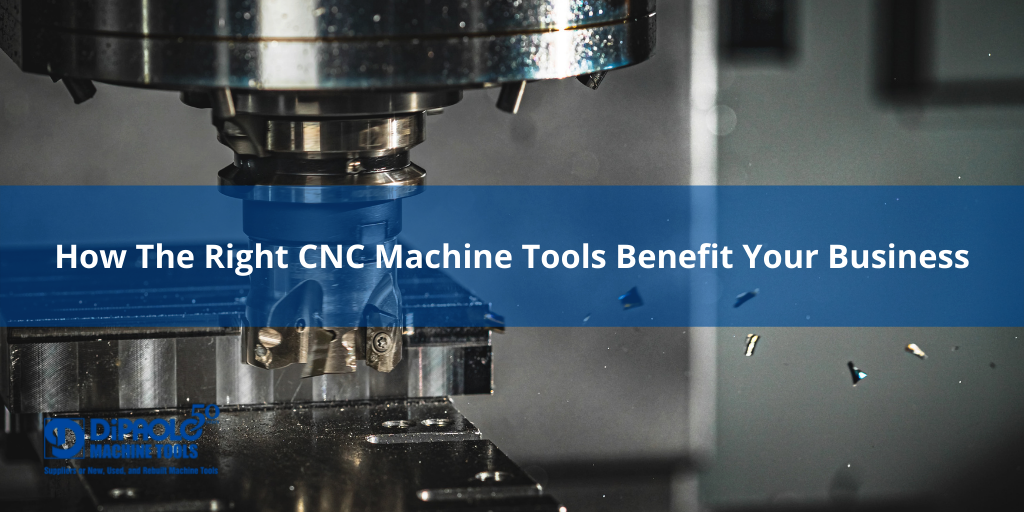CNC Machine Financing & Budgeting in Canadian Manufacturing
In today’s manufacturing environment in Canada, investing in advanced CNC equipment is no longer optional, it’s a strategic imperative if you want to accelerate growth, maintain high precision, and stay ahead of global competition. At DiPaolo Machine Tools, we know that acquiring the right CNC machine at the right time requires sharp financial and operational planning. In this post we’ll walk you through three key areas: (a) return on investment (ROI) modelling, (b) tax savings and government support, and (c) financing & budgeting strategies (buy vs lease) to minimize downtime and maximize throughput.
1. Buy vs Lease: Choosing the Optimal Financing Path
When you’re acquiring new CNC machinery, your financing choice has big implications for cash‑flow, scalability and tax strategy. At DiPaolo we film this through two main routes: Buying (via cash purchase or financed loan) and Leasing.
Buying
- You gain full ownership: control over service, upgrades, resale value, and lifecycle planning.
- Ideal if you expect consistent production usage over many years and want to build equity in the asset.
- Higher upfront cost (or loan payments) but you also unlock depreciation (Capital Cost Allowance) and interest deduction potential.
- Because you’re investing in a long‑term tool, you want to factor in total cost of ownership: energy use, space utilization, maintenance, downtime, transport/installation, operator training.
Leasing
- Lower upfront capital outlay; typically predictable monthly payments.
- Excellent for firms prioritising cash preservation or who want easier technology refresh cycles.
- Lease payments are often fully deductible as operating expenses which helps with tax planning.
- If rapid innovation or variability in production makes ownership less attractive, leasing might be the smarter path.
Which to choose?
- If your machine is going to run full time, serve key production, and you plan to use it 5‑10+ years: Buying likely.
- If you’re in growth mode, uncertain of volume, or want to stay technology‑flexible: Leasing likely.
- And whichever you pick, work with DiPaolo’s financing team and lenders to compare the after‑tax cost of each path.
2. Tax Impacts, Government Incentives & Budgeting for CNC Investment
Here’s where Canadian manufacturers can play smart: the machine price is only part of the story. Tax incentives and budgeting for hidden costs matter.
Tax & Incentive Highlights
- The federal Accelerated Investment Incentive (AII) allows companies to claim an enhanced first‑year deduction for eligible machinery and equipment. (Canada.ca)
- Essentially you can claim more in year 1 than under normal rules, accelerating your tax savings and improving cash‑flow.
- Eligible property must be acquired after Nov 20 2018 and available for use before 2028.
- Essentially you can claim more in year 1 than under normal rules, accelerating your tax savings and improving cash‑flow.
- For manufacturing/processing machinery these rules are especially relevant. Many machine tools fall into the eligible asset categories under the AII.
- At the provincial level, there may be additional credits or incentives for manufacturing investment
- Beyond asset deductions, there are incentives for innovation (such as SR&ED Tax Credit) if your equipment upgrade enables process innovation.
Budgeting & Planning the Tax Story
- When you buy a machine and it falls into an eligible class, your tax deduction in year 1 could be significantly greater (accelerated CCA) than simply depreciating traditionally. That means your after‑tax cost is lower and your ROI threshold moves forward.
- When you lease, you deduct lease payments as an expense, lowering taxable income—but you’ll never take the depreciation in your books.
- Timing matters: if the machine is purchased late in your fiscal year and not “available for use” until next year, you may lose some first‑year deduction benefit.
- Don’t forget hidden budgeting items: installation, commissioning, downtime while training, calibration
- Capturing tax/incentive gains: work with your tax advisor to ensure the machine qualifies for AII or other local incentives, and integrate the benefit into your modelling.
3. ROI Modelling, Growth & Minimising Downtime
If we accept that a machine tool is an investment (not just a cost) then the question is: how fast will your investment pay off? And how do you control the variables?
ROI Calculation Framework
Here’s a simple formula you can use (and share with your team or accountant):
ROI (%) = (Annual Incremental Benefit – Annual Cost) ÷ Total Investment Cost × 100
Where:
- Annual Incremental Benefit = (Additional parts/revenue from new machine) + (Labour/time savings) + (Reduced scrap/rework)
- Annual Cost = Financing cost (interest/leasing payments) + Operating cost (maintenance, power, tooling)
- Total Investment Cost = Purchase price + installation + training + initial downtime (opportunity cost)
Example: Suppose you buy a CNC machine for CAD $500,000. Installation/training adds CAD $50,000. Financing interest + maintenance = CAD $40,000/year. You anticipate additional revenue of CAD $120,000/year and scrap reduction savings of CAD $30,000/year.
- Annual Incremental Benefit = 120,000 + 30,000 = 150,000
- Annual Cost = 40,000
- ROI = (150,000 – 40,000) ÷ 550,000 ≈ 20% in year 1. Then subsequent years could improve once you’re past ramp‑up.
Minimising Downtime
- Plan your installation, calibration, operator training so the machine hits production as soon as possible. Longer downtime delays benefit and drags ROI.
- Consider service and support: DiPaolo offers priority service in emergency breakdowns. Post warranty, we offer preventative maintenance plans to minimize future emergencies, and calibration services to maintain quality compliance
- Track utilisation rate (actual run time vs available hours), scrap/rework rates, maintenance cost per hour. These metrics feed back into your ROI and help you refine future investments.
- Align machine spec with your growth plan. Just because the biggest machine exists doesn’t mean it’s the right one; over‑buying increases cost, slows ROI.
4. Putting It All Together – A Strategic Investment for Growth
If you’re a Canadian manufacturer ready to move from reactive to growth‑mode, here’s how to tie the parts together:
- Define your growth target: do you need 20 % more capacity, better precision, less scrap, quicker changeovers?
- Map what machine type/spec your business needs (5‑axis, multitasking, turning/milling). At DiPaolo, we work with you to properly spec out the machine tool that will serve your company’s needs.
- Run the numbers: purchase price vs lease payments + tax incentives + revenue gain + cost savings = your decision matrix.
- Engage your tax advisor early: use programs like the Accelerated Investment Incentive to optimize your after‑tax cost.
- Choose financing (buy vs lease) based on your cash‑flow, risk tolerance, and upgrade cycle.
- Build in the “soft” costs (installation, training, calibration, downtime) upfront so your budget is realistic.
- Track key metrics post‑installation: utilisation, downtime, scrap rate, operator efficiency. Use those to validate your ROI and justify the next machine.
5. Why DiPaolo Machine Tools?
At DiPaolo Machine Tools we specialise in high‑precision, high‑productivity machining solutions. To DiPaolo, you’re not just buying a machine, you’re gaining a partner who understands the financial and operational dimensions of the investment. We help you tackle financing hurdles so you can make the move without over‑extending cash‑flow. DiPaolo Machine Tools works closely with trusted financial partners, including Mitsubishi HC Capital, to provide flexible financing solutions tailored to Canadian manufacturers.
Ready to explore your next machine tool investiment? Contact Dipaolo Machine Tools today and let's model your ROI, gauge tax savings and determine the best financing path. Visit dipaolocnc.con/financing or call 1-905-676-9265 to get started.


